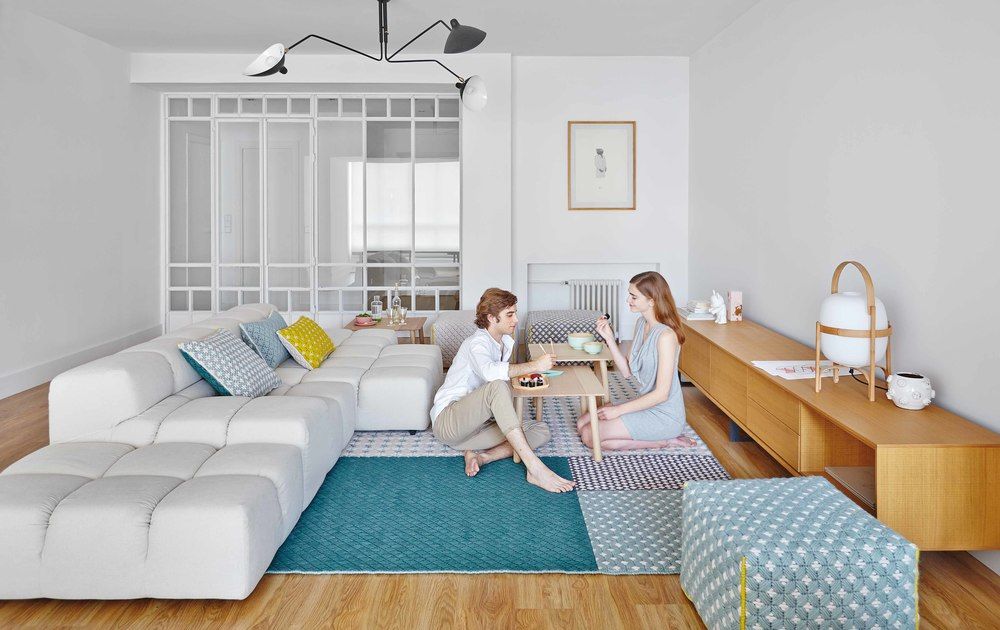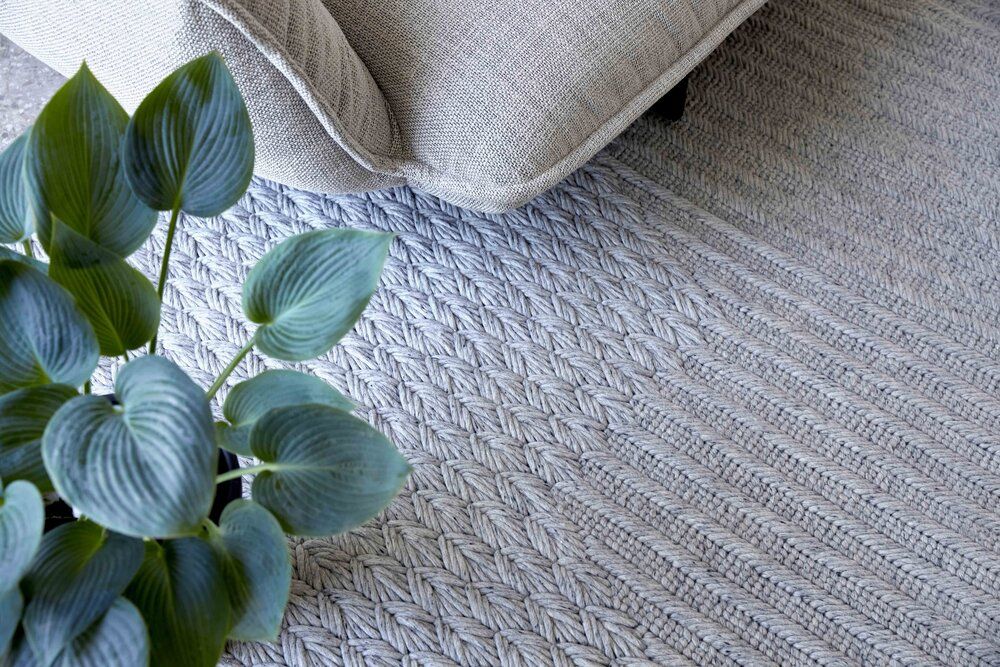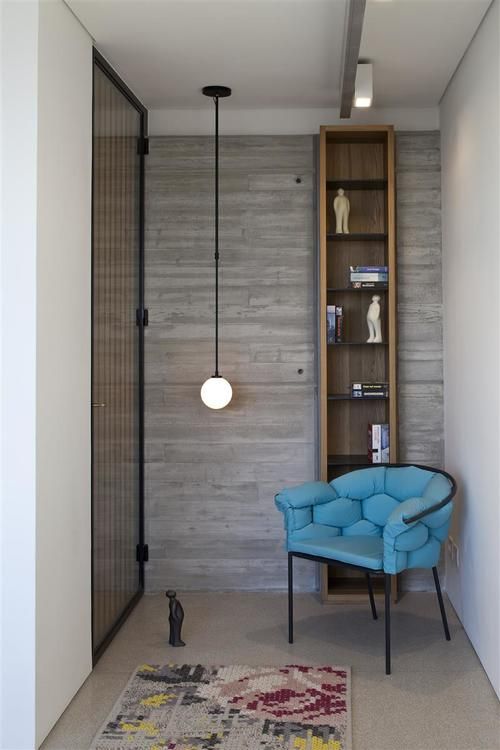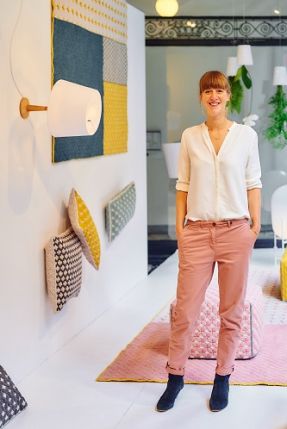
A graduate of La Cambre Visuals Arts in the early 2000s, this Brussels-based, Belgian designer works on many international projects. A meeting with a committed textile designer, who is also a teacher quite aware of the new challenges in an evolving sector.

Your designs give off a lot of joy. At the risk of sounding clichéd, is that what people are looking for right now?
If that is the feeling that emanates from my projects, I’m delighted. Personally, I need to evolve in a happy environment. For me, the carpet is a piece of furniture in its own right. When it comes in thick wool and a very colourful palette, like Gan’s new “Crystal” line, it becomes a place of relaxation, of rejuvenation, but also of play. For this collection, the experience in pattern development I accumulated over several years, has been put to full use. Then there is the “Chaddar” collection: an extension of an earlier project started in 2015, which highlights the art of embroidery. These are small-scale productions that focus on artisanal excellence and the mastery of unequalled know-how.
Your career as a textile designer is very international. Is this by choice, desire or obligation?
In 2006, I had the opportunity to participate in the Milan furniture show. The contacts I made there with Koziol, Gan and Ligne Roset allowed me to launch myself as a freelance designer. At the time, I was looking for brands at international shows based on my affinities. For example, Gan and I have the same sensibility. They were receptive to my creative vision from the start.

This first collaboration goes back 15 years. How has the profession changed since then?
It has become very competitive. Traditional channels are saturated. As a freelance designer, I invest myself in each project for several years. Any design becomes a long-term risk, carrying with it the fear that the product will not be successful. In recent years, we have seen local, ecological and artisanal considerations gaining importance. New models of funding, and of shared or rented usage, are emerging. Knowledge and information are shared. We are developing more synergies. The collective takes up more space. Social networks also enable everyone to get their share of visibility – provided you devote time to them.
You teach design at ESA Saint-Luc in Brussels. Do you communicate this reality of the profession with your students?
I want to give them a fairly broad view of the profession. Alongside the classes that I give to future interior designers, I am a lecturer for the master’s degree programme in Social Innovation Design, a unique project in Belgium that brings together students of visual communication, such as graphic design and comics, and of space, such as design and architecture. The idea is to get them to think together about real projects, and about the societal changes that are currently taking place. Living together, the circular economy and environmental protection are some of the key values of our students’ projects. In both educational programmes, we place a lot of importance on understanding the societal context and the relevance of the creative response that gives shape to a feasible, viable and desirable reality. What delights me is to see how creativity and art are powerful levers to make this long-awaited change happen.

Recently, you too have chosen to reflect on the values you want to convey through your studio. Explain this to us.
When I turned 40 years old, I wanted to realign myself with my values. The confinement gave me the opportunity to do so. I think that, as designers, we have a responsibility in terms of what we make desirable and how the products are designed. What’s interesting is that design can go beyond the product itself. It is an innovation tool that can give rise to new uses, too. I also remain very attached to the beauty and poetry that surrounds us and to the quality of the artistic proposal. The imagination and the emotions that the products generate animate me as much as ever.
In your case, this sustainable approach led you to specialise in textile design.
After my industrial design studies, I developed – a bit by chance – a project centred on reusing materials intended for recycling. That was when I tried my hand at embroidery. Today, when Gan uses my designs for “Diamond” (a line of outdoor rugs made from recycled plastics fibre), the project fits logically within my overall reflection on the missions of the profession of designer. I once hesitated between styling and architecture. Today, I navigate between the two with passion and commitment.

Lately you have also decided to look at your job a little differently.
After working internationally in Germany, France, Spain, etc., I wanted to re-envision the basics of my work by refocusing on a more local context. When I design a product, I play with the feasibility, the customer’s business model and the users’ needs. I like this holistic approach and the human contact. At the same time, I continue to enjoy designing for Gan, and I think it is important to support crafts in India at the moment.
How is this reflection taking shape in the context of your studio?
I have started new collaborations with closer companies, in Belgium, who in particular share my values. I am also working on self-production projects, to push my work on the reuse of materials and the circular economy further.
